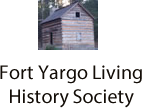William Harris Homestead
Circa 1825
PLACED ON THE NATIONAL REGISTER OF HISTORIC PLACES
BY THE DEPARTMENT OF THE INTERIOR IN 1982
3636 GEORGIA HIGHWAY 11, MONROE, GEORGIA 30656
The William Harris Homestead is an excellent example of the homes and plantations established in Walton County, Georgia, after the formation of the County in 1818.
The lands owned by William Harris originally were Land Lots Numbers 122 and 149, consisting of 250 acres each in District 3, as set out in the County when organized and located on both sides of Rogue’s Road (now Georgia Highway 11) on the Apalachee River.
In 1818 the Creek Indians were paid $120,000 for 1,500,000 acres. From these acres, Walton County was formed in 1818, comprising 394 square miles at that time. The Indians living along the Apalachee River, including the lands later owned by William Harris, found the soil to be fertile and fish and game to be plentiful.
The William Harris Homestead is probably one of the few early plantations in Georgia that remains sufficiently intact to depict the culture and lives of the first inhabitants of the County. These families were independent and resourceful and provided for themselves. Each family raised row crops, wove wool and cotton cloth for clothing and household linens; raised livestock for milk, butter and meat; raised chickens, ducks and geese; grew their own wheat and corn for flour and meal; cobbled their own shoes and made their own soap. They had vegetable gardens and orchards; preserved fruits and vegetables for the winter; and they kept formal gardens for herbs and medicines, flowers and shrubs. Cotton was usually grown on every available acre for the cash crop. The families went to church and buried their dead, often in family cemeteries. It was not uncommon for one or two generations to be born and buried on the same plantation.
The historical significance or the William Harris Homestead is its value as a complete entity to provide future generations with an insight to the lives of the people of the early nineteenth century, as they pushed northward and westward, settling the lands of the nation.
PLACED ON THE NATIONAL REGISTER OF HISTORIC PLACES
BY THE DEPARTMENT OF THE INTERIOR IN 1982
3636 GEORGIA HIGHWAY 11, MONROE, GEORGIA 30656
The William Harris Homestead is an excellent example of the homes and plantations established in Walton County, Georgia, after the formation of the County in 1818.
The lands owned by William Harris originally were Land Lots Numbers 122 and 149, consisting of 250 acres each in District 3, as set out in the County when organized and located on both sides of Rogue’s Road (now Georgia Highway 11) on the Apalachee River.
In 1818 the Creek Indians were paid $120,000 for 1,500,000 acres. From these acres, Walton County was formed in 1818, comprising 394 square miles at that time. The Indians living along the Apalachee River, including the lands later owned by William Harris, found the soil to be fertile and fish and game to be plentiful.
The William Harris Homestead is probably one of the few early plantations in Georgia that remains sufficiently intact to depict the culture and lives of the first inhabitants of the County. These families were independent and resourceful and provided for themselves. Each family raised row crops, wove wool and cotton cloth for clothing and household linens; raised livestock for milk, butter and meat; raised chickens, ducks and geese; grew their own wheat and corn for flour and meal; cobbled their own shoes and made their own soap. They had vegetable gardens and orchards; preserved fruits and vegetables for the winter; and they kept formal gardens for herbs and medicines, flowers and shrubs. Cotton was usually grown on every available acre for the cash crop. The families went to church and buried their dead, often in family cemeteries. It was not uncommon for one or two generations to be born and buried on the same plantation.
The historical significance or the William Harris Homestead is its value as a complete entity to provide future generations with an insight to the lives of the people of the early nineteenth century, as they pushed northward and westward, settling the lands of the nation.










